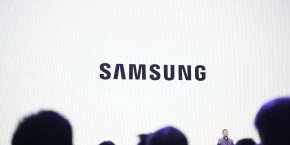
After months of rumors and speculation, Samsung finally announced its next flagship handsets at a crowded event here in Barcelona. Thousands of tech journalist watched on as Sammy took the wraps of the Galaxy S7 and S7 Edge which, in many ways, are the upgraded models we needed from the Galaxy S6 and S6 Edge launched in 2015.
Samsung’s two newest flagships both boast a premium metal and glass design and look very similar to the S6 and S6 Edge. There is one key difference this year, however: The Edge model has a larger screen than the ‘regular’ S7 and, as the name suggests, has those trademark curved secondary displays on either side of the phone.
The regular S7 has a 5.1-inch Super AMOLED panel, while the Galaxy S7 Edge features a larger 5.5-inch screen. Both sport Quad HD (2560 x 1440) resolution giving them a pixel density of 575ppi and 534ppi respectively, making them ideal for Samsung’s bespoke VR headset.
It’s worth noting there are different model S7’s for different regions. The US, Japan and China will be getting the 2.2GHz quad-core, Snapdragon 820-powered chips with other markets due to get the 2.4GHz octa-core Exynos-equipped versions. You’ll also see different storage capacities depending on region. 32GB and 64GB models are being launched, but you won’t see both in the same market.
https://youtu.be/w9l0ijUv9uM
Unlike last year’s phones, you will be able to expand the storage up to a massive 200GB extra, thanks to the inclusion of a MicroSD card slot in the SIM card tray. With Android 6.0 Marshmallow’s ability to adopt external storage, that could technically give you more internal storage than you dreamed possible on a handheld device.
On the back, there’s an advanced 12MP camera which, although boasting fewer pixels than the S6/S6 Edge, can produce much better results thanks to Samsung’s new BRITECELL technology. What’s more, the camera sits almost flush with the back panel of the device, ensuring there will be no complaints about a protruding camera from the Samsung faithful this year. As you’d expect, it can also shoot video in 4K. For those interested, the front camera sensor packs in 5 megapixels.
IP68 certification means the phone has some well-tested water and dust resistance, and the all black finish makes it one of the best-looking devices we’ve seen on the Android market for some time.
While it will surely win back fans for the re-inclusion of expandable storage, more will be pleased with the boost in battery capacity. The S7 features a 3000mAh battery, while the S7 edge’s slightly larger fuel cell boasts 3600mAh. Charging them won’t take much time, but the method is ever-so-slightly bemusing. Samsung decided not to go with Type C, instead opting for Micro USB.
The devices will hit the market in black, gold, wine red and gray/silver on March 11th with pre-orders due to open up on February 23rd.
FTC: We use income earning auto affiliate links. More.





Comments